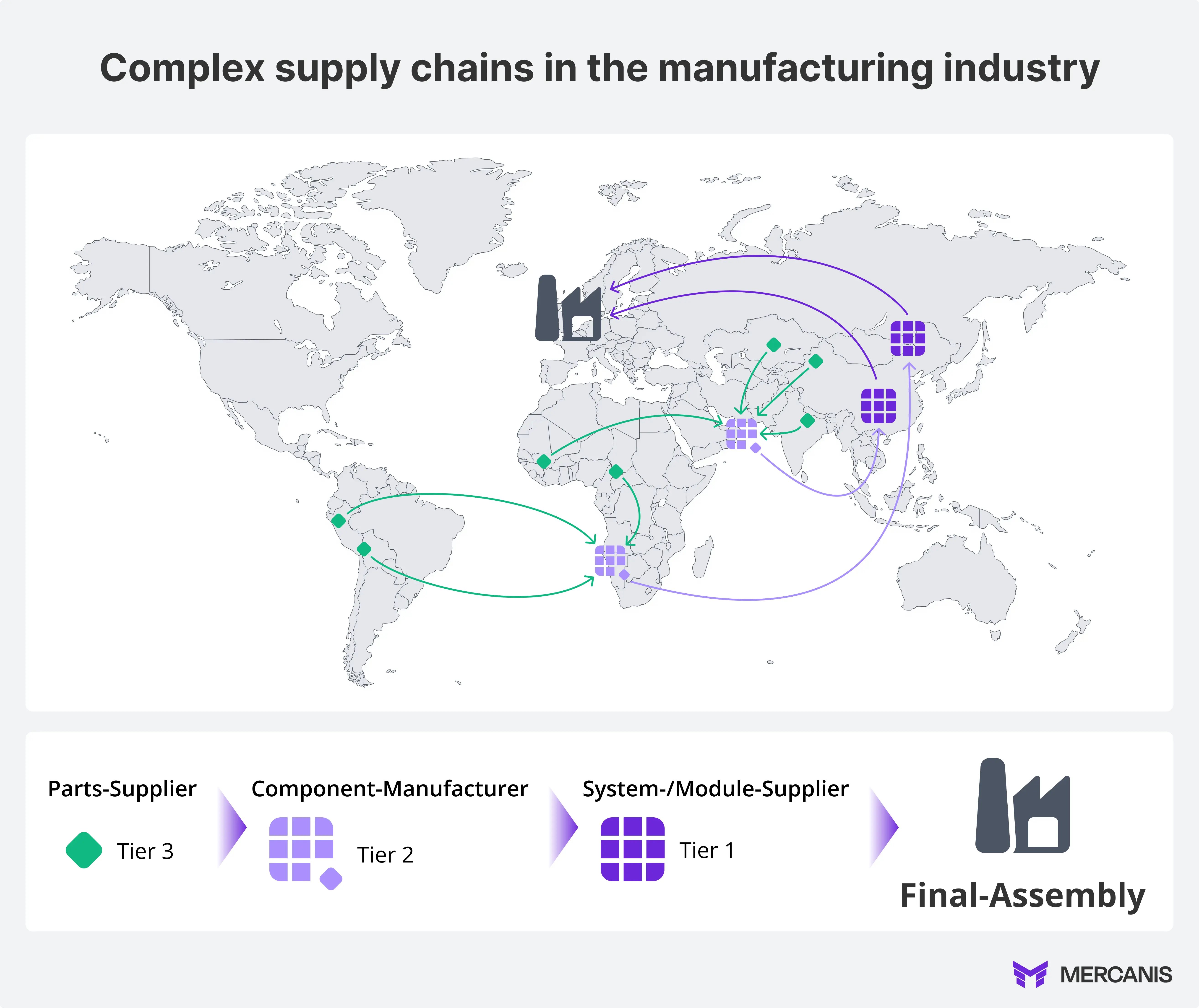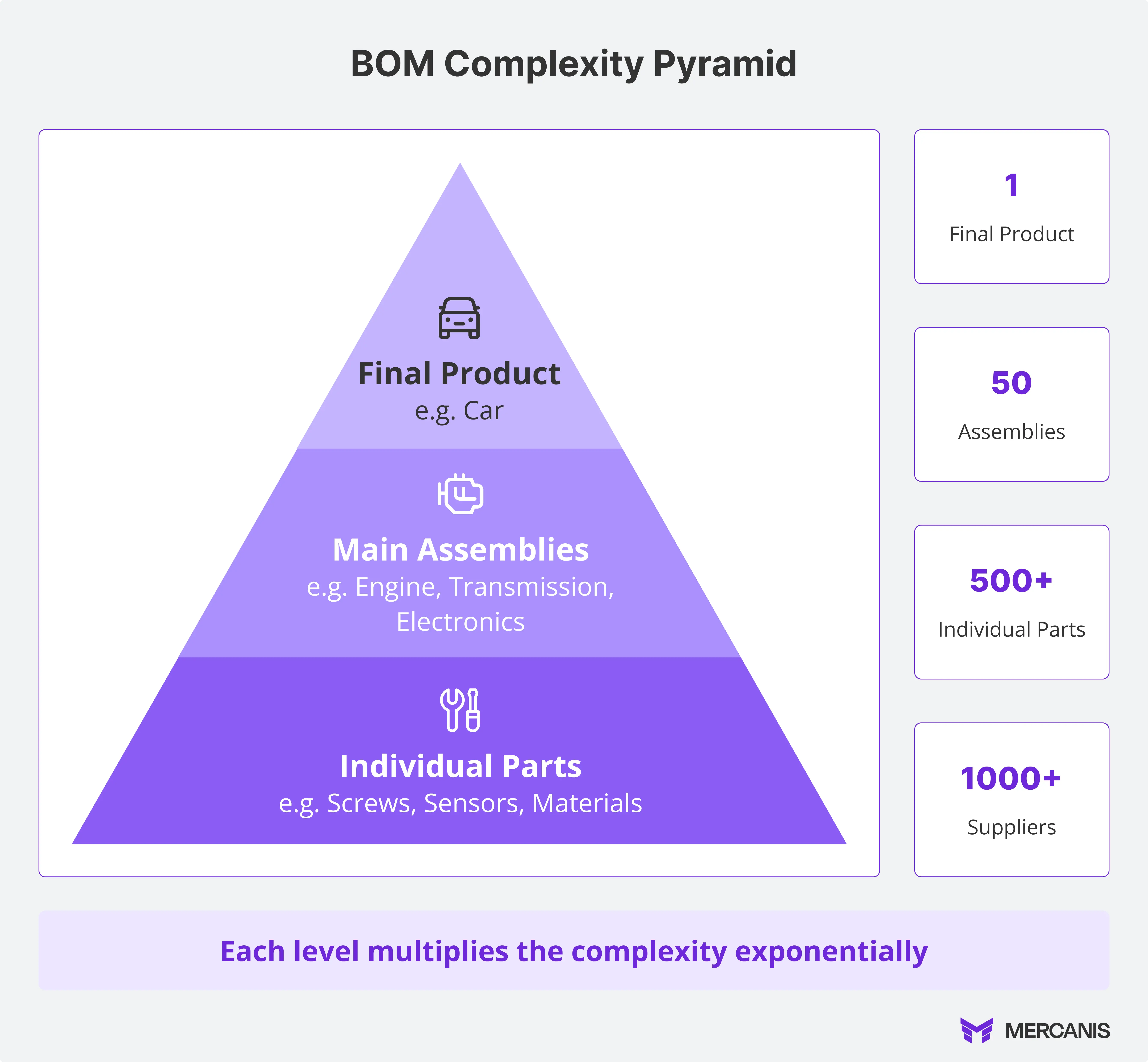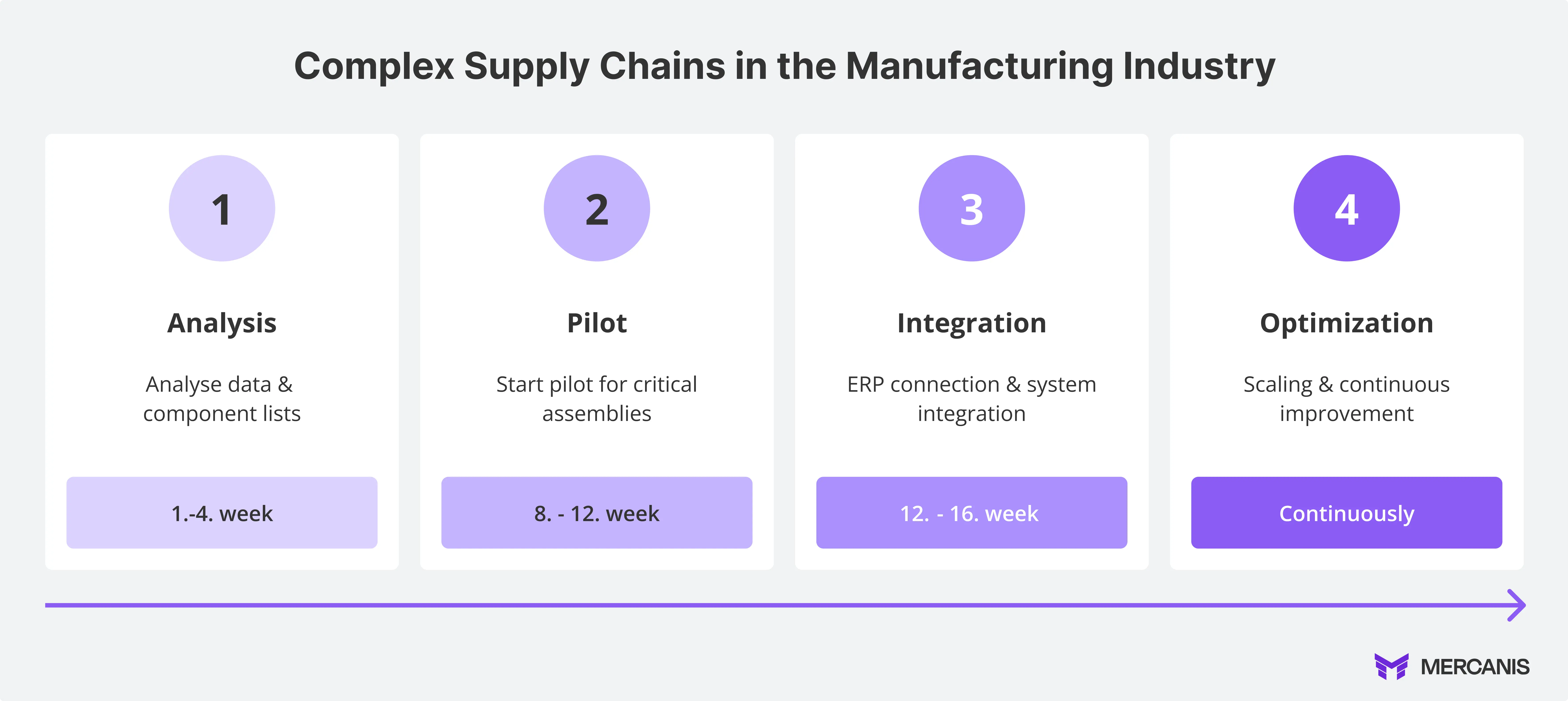
Modern supply chains are extremely geographically dispersed. They span multiple continents and involve a large number of players at each stage.

While Tier 1 suppliers are often well known and have solid contracts, the second and third tiers (Tier 2 and Tier 3) are often unclear. Info about delivery routes, risks, or critical dependencies often gets lost here, which can have serious consequences in a crisis.
Even minor errors in traceability can quickly lead to:
The result: delivery failures or production stoppages, even though the Tier 1 suppliers are still formally able to deliver.
Transparency does not end at Tier 1. If you want to make your supply chain resilient, you also need to keep an eye on the second and third tiers and rely on strategic supplier management.
This is precisely where artificial intelligence offers enormous potential.
AI can connect critical data from different sources. It reveals important connections and helps purchasing teams master complexity.
These are industries in which production reliability, product diversity, and regulatory requirements are particularly high.
In the manufacturing industry, purchasing is no longer an isolated function. It is closely linked to product development, production, and supply chain strategy.
This becomes particularly clear when managing bills of materials (BOMs). These lists often contain hundreds to thousands of individual items:
Each item can be linked to:

This not only leads to a lot of administrative work, but also to a high risk – especially when changes or failures affect individual parts.
1. Slow processes for complex BOMs:
Bills of materials are the backbone of every industrial production process. However, a lack of transparency in these structures poses considerable risks, particularly in terms of traceability.
Manual tendering processes for complex BOMs with hundreds of components lead to dramatically longer procurement times. While purchasers tender for each item individually and laboriously compare offers, the clock of market dynamics continues to tick relentlessly. The consequences are measurable:
When BOM items are routinely awarded to known suppliers without organizing a genuine price comparison, significant savings potential remains untapped. The reason is often simple: with hundreds of components, a broad market analysis seems too time-consuming.
While purchasers spend their time manually processing commodities and matching offers, there is no capacity for value-adding strategic procurement tasks. The result: a department that should be laying the foundation for competitive advantages becomes a mere processing unit.
The result: a strategic success factor becomes an operational cost driver—and value creation remains far below its potential. These challenges require new approaches.
The complexity of global supply chains and multi-level bill of material structures requires new technological approaches. AI offers three key levers:
AI connects fragmented data sources such as ERP, PLM, or external supplier databases. This reduces manual data entry, increases data quality, and enables end-to-end transparency for the first time – down to Tier 3. This creates the basis for informed decisions across the entire network.
Graph databases make supplier networks visually comprehensible, including all direct and indirect relationships. In combination with natural language processing (NLP), even unstructured information from PDFs, emails, or websites can be evaluated. This creates new visibility for previously hidden dependencies.
AI recognizes early indicators of impending disruptions, such as delayed shipments, negative risk assessments, or geopolitical changes. Simulations can be used to run through alternative scenarios and generate concrete recommendations for action, such as automatically suggesting alternative suppliers.
The introduction of AI in purchasing does not begin with technology, but with structure. If you want to use AI successfully, you should start with a clear, step-by-step approach:

First, you need clarity:
What data is actually available? In which systems? How is it structured?
This step identifies data gaps, redundancies, and inconsistencies. It lays the foundation for everything that follows. Without a reliable database, any AI initiative will remain inefficient.
Don't start everything at once, but rather start where the leverage is greatest.
Select a product group with high complexity or high risk and integrate initial AI modules, e.g., for supplier evaluation or early risk detection.
This creates a realistic use case with measurable impact.
Connectivity is essential for scaling the pilot.
Connection to ERP, PLM, or SCM systems such as Mercanis is essential. Clear interfaces must be defined and access rights neatly regulated.
The goal is smooth system integration – no additional data silos.
AI does not learn on its own; AI needs feedback.
Regular evaluation of the results and targeted manual feedback continuously improve the algorithm.
At the same time, the application can be extended to other product groups, plants, or regions.
Artificial intelligence is not a panacea, but it is a powerful tool when used in a targeted manner. It does not replace a sound purchasing strategy, but it makes its implementation possible in an increasingly complex world.
Through the intelligent use of AI, companies can:
In volatile markets in particular, the following applies:
Those who invest in transparency and data expertise today will not only be more stable tomorrow, but will also have a clear advantage.

A bill of materials (BOM) is a detailed list of all components, materials, and parts required to manufacture a product. In the manufacturing industry, BOMs can contain hundreds to thousands of items, including technical drawings, certifications, and supplier information. Each level of the bill of materials increases the complexity exponentially.

Tier 2 and Tier 3 suppliers often provide critical components or raw materials, but are poorly documented in many companies. In a crisis, a lack of transparency at these levels can lead to delivery failures, quality problems, or production downtime.

AI helps to link unstructured data sources, analyze parts lists, and make supplier networks transparent. Automation, predictive analytics, and multi-tier visibility enable risks to be identified earlier, procurement times to be shortened, and savings potential to be realized.

Multi-tier visibility refers to the ability to see all levels of the supply chain – from tier 1 to tier 3 – at a glance. AI and graph databases can also be used to reveal indirect dependencies, which is essential for resilience and risk management.

Continuous optimization through feedback and AI training
This step-by-step approach ensures that AI solutions are scalable and practical.




